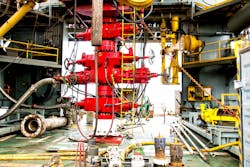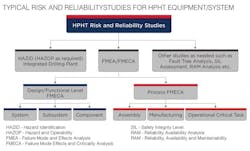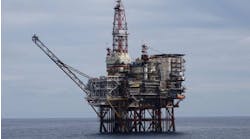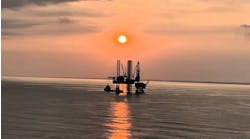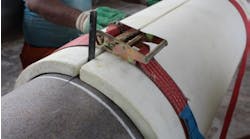Third-party verification plays key role in HP/HT technology adoption
New codes and standards should expedite development
Harish Patel, ABS
In the offshore arena, the journey to develop and produce oil and gas from high-pressure/high-temperature (HP/HT) fields began more than a decade ago. At that time, project needs were beyond the capability of the available technology. Nor had the applicable codes and standards been developed. The oil and gas industry needed new drilling, evaluation, completion and production equipment that could withstand these harsher environments.
The US Department of the Interior’s Bureau of Safety and Environmental Enforcement (BSEE) defines an HP/HT environment as any reservoir that requires completion equipment or well control equipment with an assigned pressure rating greater than 15,000 psi and/or a temperature rating greater than 350°F.
These harsher and more extreme drilling environments present a series of challenges to offshore operators, equipment vendors and service companies. To safely and successfully operate in HP/HT environments, operators clearly cannot use equipment that would quickly exceed its design capability. Operators need to redesign equipment to accommodate HP/HT conditions as well as carry out advanced planning for modified operational procedures.
Since the consequences of failure in offshore HP/HT environments are potentially severe, regulators such as BSEE have added extra rigor in their permitting and approval process for such projects, requiring additional risk studies, design verification, and validation of equipment using an Independent Third Party (I3P) for verification and oversight.
Becoming a reality
The oil and gas sector has waited a long time for offshore HP/HT production to become a day-to-day reality. In some cases, the meter is running on these resources; operators are keen to develop them while they retain the rights to do so. With the required technologies and regulations now in place, many operators with undeveloped offshore HP/HT assets are looking forward to converting them from reservoirs into reserves.
BSEE requires the offshore operator to nominate an I3P that will be responsible for evaluating documentation pertaining to the new technology, and to generate a report for BSEE’s review and approval. These BSEE requirements require the operator, original equipment manufacturer, and sub-vendors to work with the I3P and BSEE.
From the beginning of these developments, ABS acted as the ISP on behalf of numerous offshore operators. Over last five to six years, the classification society has been involved at various stages of design verification, validation for various equipment, and studies aimed at addressing the risks of HP/HT technology and operations.
Early in the development process, the industry identified the important technical challenges it would need to address early in the cycle. These challenges included a lack of industry codes and standards; lack of regulation; equipment design; the need for newer materials (both elastomer and metallic); and the resources for manufacturing and inspection of this much larger equipment.
Codes and standards
Over the last decade, the industry has worked systematically to address these challenges and the result is that operators now have field resources contracted and projects very close to final investment decision.
To address the challenges of industry codes and standard practices, ABS worked closely with various standards organizations and has developed HP/HT-related requirements to the standards of the American Petroleum Institute (API) and American Society of Mechanical Engineers (ASME). These standards can now be used for design and manufacture of HP/HT drilling equipment.
BSEE and API codes require that HP/HT equipment meet ASME design check methodology. This presents a unique challenge for the industry, since these are new methodologies for design compared to traditional API methods. ABS quickly noticed that application and understanding of ASME methodology varied by manufacturer. This variability poses a unique challenge for the I3P, in particular for fatigue and fracture mechanics analysis.
ABS worked closely with BSEE to develop a regulatory requirement which the industry could follow. BSEE has now published three Notice to Lessees (NTLs 2019-G02, 2019-G03 and 2019-G04) for HP/HT-related field development requirements for offshore operators.
To address equipment design challenges, the industry has followed the Technology Qualification (TQ) process for each piece of equipment, including both design verification and design validation as separate processes.
In addition, TQ involves additional areas of concern regarding material selection/qualification, and the study of potential failure modes and risks with their mitigation methods. The materials performance criteria in HP/HT drilling environments has not yet been established due to the limited availability of case histories and the remaining uncertainties related to the composition of the fluids involved at elevated temperatures and pressures.
As part of the TQ process, various risk and reliability studies are required to better identify the hazards and evaluate subsequent risks associated with a proposed technology during its initial evaluation. These studies must be continuously updated to manage risk over the asset lifecycle.
Risk and reliability
The TQ process includes evaluating HP/HT drilling hazards using risk assessments and reliability studies. These studies are an essential step in the TQ process to ensure the ability of the novel technology aspects in achieving their functional requirements and goals.
In addition, the risk and reliability studies provide extra verification that the technology meets the functional requirements, in order to provide an adequate level of safety. The flow chart in this article presents a typical process for the risk and reliability studies when undergoing the technology qualification of HP/HT equipment and system.
Materials selection
HP/HT conditions add an increased challenge to the process of material selection for equipment due to the extreme operating conditions. At the beginning of the study of HP/HT operations, there were many uncertainties involving the specific environmental effects on the material properties due to the lack of field data.
As a result of this data scarcity, uncertainty concerning material suitability to operate in the HP/HT environment required manufacturers to make major investments, to qualify their proposed materials. Various factors having a major bearing on the material selection included but were not limited to:
• Temperature
• Chemistry
• Manufacturing procedure
• Material properties
• Exposure to environment: seawater, wellbore, drilling and completion fluids, general and localized corrosion
• Erosion
• Elastomers
• Design life
• Creep at high temperatures
• Material interactions.
Over the last 10 years, an increasing proportion of equipment has been designed, built, and tested under the TQ process and been approved by both the independent third party and BSEE. Getting equipment qualified under this extremely challenging development process has been a significant achievement for the industry, but greater challenges are still ahead.
The next phase of the HP/HT story is building the equipment and developing the fields themselves. Looking at the bigger picture, the operator needs to address risk related to development of the field. There will be numerous challenges.
The equipment qualified for operations are of new design and as a result their reliability is still unknown and will require a great deal of attention during manufacture, testing, and operations.
Rig design and integration
The demands of the HP/HT environment have increased size and weight of equipment and as a result, well control and drilling in particular pose a bigger challenge. Some of the challenges that need to be considered in building out systems for HP/HT operations include:
• Structural modification
• Higher weight of HP/HT equipment
• Handling and lifting systems
• Derrick capacity
• HP/HT system integration
• Blast load
• Risk and risk study requirements
• Well control
• Crew training
• Well completion
• Equipment design verification and validation for HP/HT
• Additional codes and standards compliance.
In addition to well control, there will be additional drilling-related challenges that need to be addressed such as kick detection which has a major impact on safety and will require greater attention.
Operators need to perform detailed risk studies from a system perspective, considering all operation phases and modes of field development to identify the likely risks and provide mitigation.
At present, the regulator has not developed specific requirements for the types of control systems used to manage HP/HT equipment and systems. These systems will require special attention, with all control systems subject to thorough risk study, verification and validation.
Unlocking the potential
The work of the past decade shows that the industry has grasped the challenges of HP/HT operations and has become more comfortable with the requirements from a technical and regulatory perspective. Operators are now able to make final investment decisions on the basis that the R&D work has produced approved technology.
The first phase of actual operations will be critical in providing real world data and experience of how the technology performs in this environment, and whether new items need to be considered from a risk or system perspective.
Once this begins to happen, the industry can move toward standardization of the technology components and begin to make inroads into managing and reducing the high costs associated with the development of first-generation equipment. •
The author
Harish Patel is Senior Technical Advisor, Technology–Drilling and Process, ABS.
